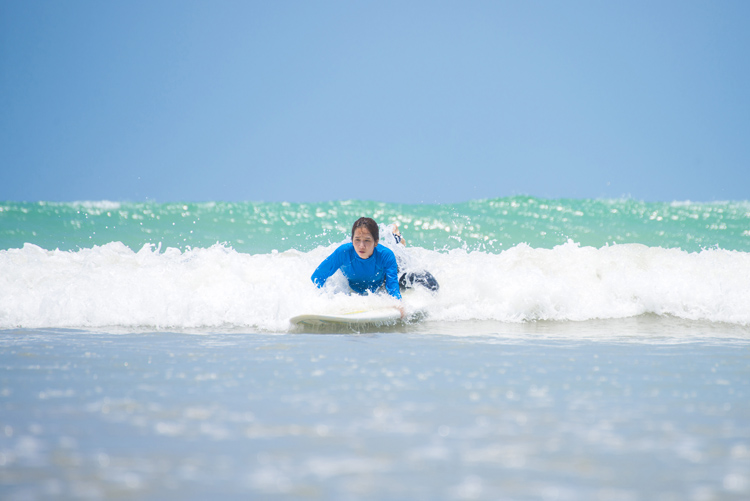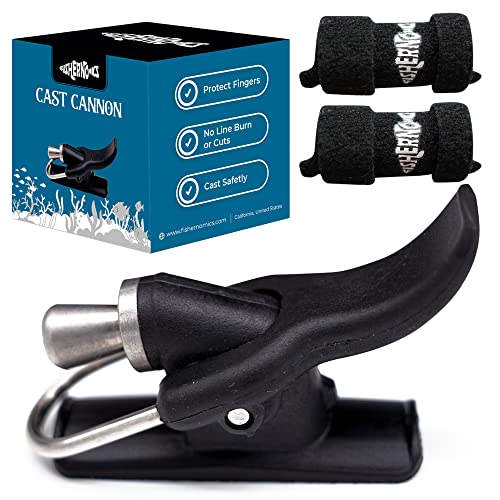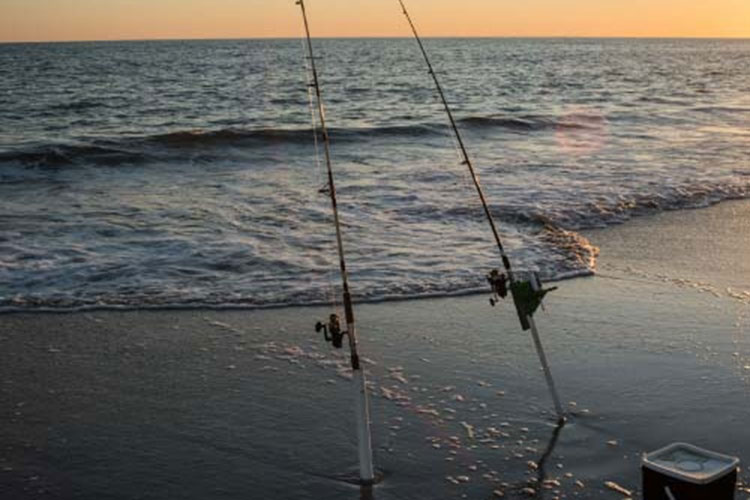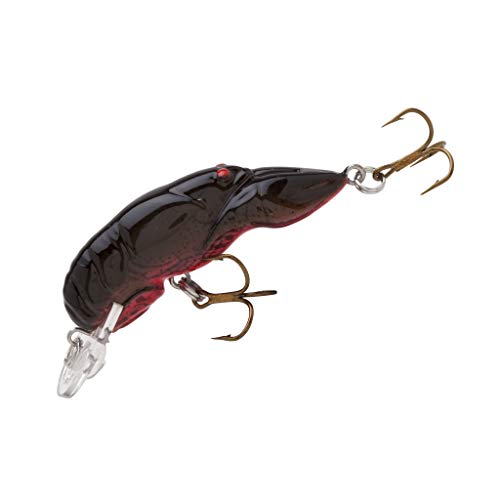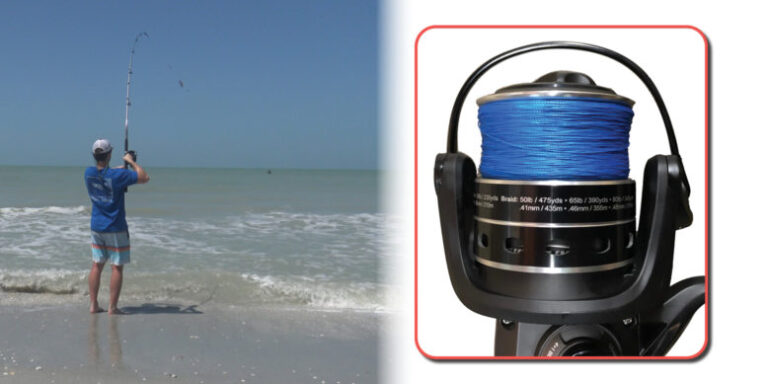Surf fishing involves casting a baited hook into the ocean from the shoreline in order to catch fish. This popular angling technique requires an understanding of tides, wave patterns, and the behavior of different fish species.
The angler stands on the beach or wades into the water, casting the line beyond the breaking waves and waiting for fish to bite. Patience, skill, and knowledge of the fishing location are essential for success in surf fishing. Additionally, the gear used in surf fishing, such as longer rods and heavier lines, must be able to handle the challenges of casting and reeling in fish in a dynamic and sometimes rough coastal environment.
Successful surf fishing techniques can be honed through experience and a continual adaptation to changing conditions.
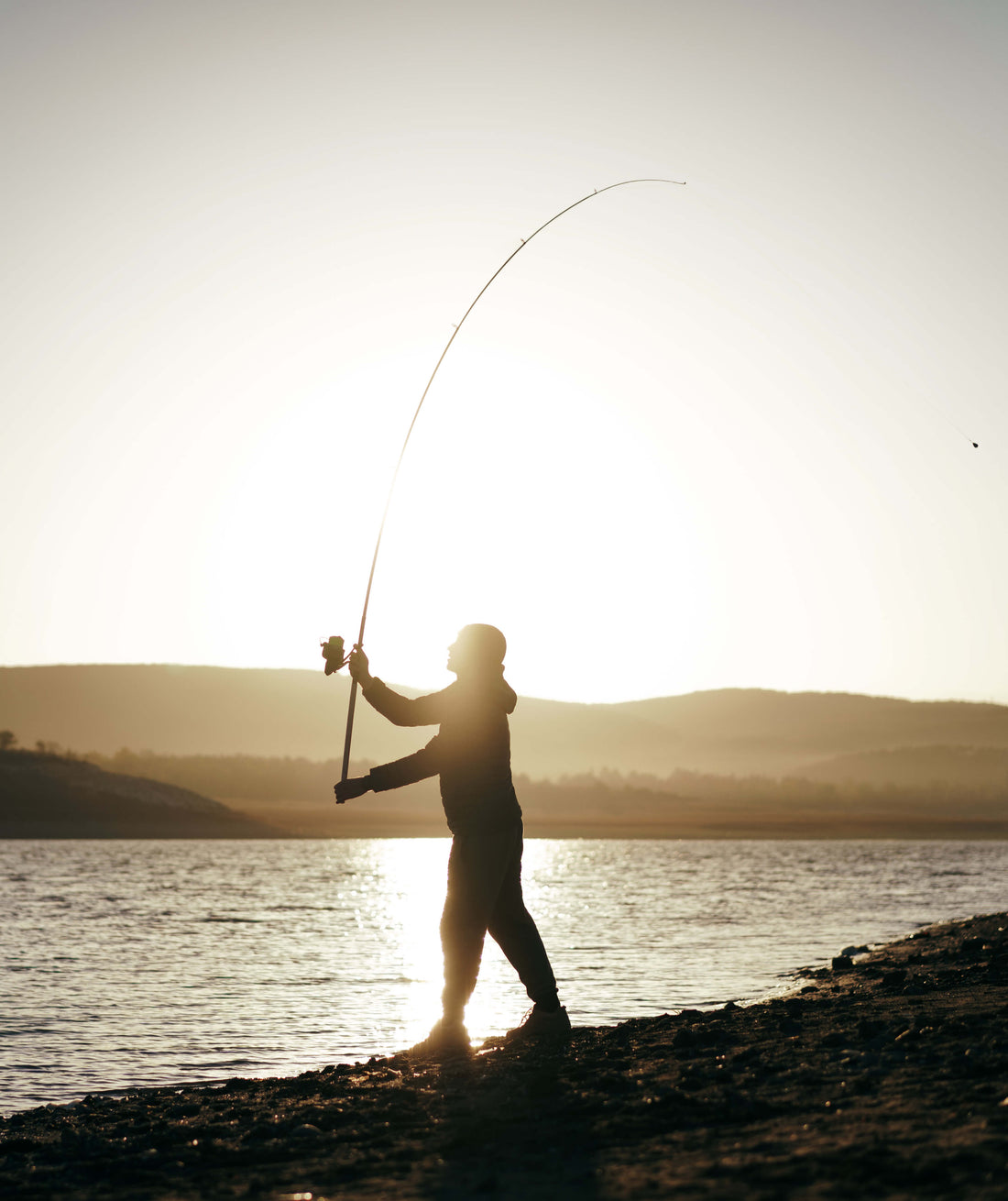
Credit: www.windrider.com
Understanding The Basics Of Casting And Reeling
Surf fishing is an exciting and rewarding activity that allows you to enjoy the serene beauty of the shoreline while trying your luck in catching fish. To become an effective surf angler, it is crucial to understand the basics of casting and reeling.
Mastering these techniques will help you achieve greater casting distance, accuracy, and optimal control over your fishing line. In this section, we will explore the different types of fishing rods and reels, as well as the importance of choosing the right line and bait for a successful surf fishing experience.
Types Of Fishing Rods And Reels
When it comes to surf fishing, having the right fishing rod and reel combination is essential. Here are the key points to consider:
- Spinning rods and reels: Spinning gear is the most popular choice for surf fishing due to its versatility and ease of use. It features a fixed spool reel mounted on the underside of the rod, allowing for long-distance casting. The spinning rod’s length typically ranges from 8 to 12 feet, providing excellent leverage to cast heavier lures or baits.
- Baitcasting rods and reels: Baitcasting gear is suitable for experienced anglers who prefer increased casting accuracy and control. It requires more skill to operate but offers better maneuverability and the ability to handle heavier lines and lures. Baitcasting rods are generally shorter, between 7 and 9 feet in length.
- Surf rods and reels: Specifically designed for surf fishing, these heavy-duty rods and reels offer superior casting distance and power to handle large fish. Surf rods typically measure between 10 and 15 feet in length and have a longer butt section to provide leverage when casting.
Choosing The Right Line And Bait
Selecting the appropriate fishing line and bait is crucial for a successful surf fishing excursion. Here’s what you need to know:
- Fishing line: Opt for a line with a higher pound test strength to withstand the strong currents and potential fighting power of saltwater species. Monofilament lines are popular choices due to their affordability and versatility. Fluorocarbon lines provide greater invisibility in the water, making them ideal for targeting cautious fish. Braided lines offer exceptional strength and sensitivity to detect subtle bites.
- Bait selection: The type of bait you choose will largely depend on the species you’re targeting. Some popular options include live bait, such as sand fleas, shrimp, and squid. Artificial lures like spoons, jigs, and soft plastics can also be effective in enticing fish to strike. Researching your intended catch and understanding their feeding habits will help you select the most appropriate bait.
Now that you have a better understanding of casting and reeling techniques, as well as the importance of selecting the right rod, reel, line, and bait, you are well-equipped to embark on your surf fishing adventures. Remember to practice your casting skills regularly, experiment with different techniques, and most importantly, have patience and enjoy the process.
Happy fishing!
Tips For Casting In The Surf
When it comes to surf fishing, mastering the art of casting is essential for success. Proper form and technique, along with adjustments for wind and wave conditions, can make a huge difference in the distance and accuracy of your cast.
Here are some tips to help you cast like a pro in the surf:
Using Proper Form And Technique
- Establish a solid stance: Position yourself with your feet shoulder-width apart and slightly staggered. This will provide stability and improve your casting motion.
- Grip the rod correctly: Hold the rod firmly but not too tightly. Your grip should be comfortable and allow for smooth movement during the cast.
- Utilize your entire body: Casting with just your arm will limit your distance and accuracy. Instead, engage your entire body in the casting motion, using your hips, torso, and arm to generate power.
- Smooth and controlled casting motion: Avoid jerky or hurried movements. Instead, focus on a smooth and controlled casting motion, following through with your arm and rod to achieve maximum distance.
Adjusting For Wind And Wave Conditions
- Determine the wind direction: Before casting, take a moment to assess the wind direction. This will help you adjust your casting angle and prevent the wind from interfering with your cast.
- Casting into the wind: When facing a headwind, you’ll need to adjust your casting angle slightly downwards. This will help counteract the wind and prevent it from carrying your bait away from your desired fishing spot.
- Casting with the wind: When casting with the wind at your back, you can angle your cast slightly higher than usual to take advantage of the wind’s assistance. Just be mindful not to overpower your cast and risk losing control.
- Observing wave patterns: Take note of the wave patterns and the spacing between them. Timing your cast between waves can ensure that your bait lands in the desired location without getting washed away.
Timing Your Cast For Maximum Distance
- Waiting for the optimum moment: Patience is key when it comes to surf fishing. Watch the waves and time your cast so that it coincides with a lull in the wave action. This will allow your bait to travel further before landing in the water.
- Practicing your timing: The more you practice, the better you’ll become at gauging the timing for optimal casting distance. Observe the rhythm of the waves and experiment with your casts to find the sweet spot.
- Experimenting with different weights: Varying the weight of your bait or sinker can also affect your casting distance. Lighter weights are better suited for shorter casts, while heavier weights can increase the distance.
Remember, mastering casting in the surf takes time and practice. By using proper form, adjusting for wind and wave conditions, and timing your cast effectively, you can enhance your chances of landing that big catch. So grab your rod, head to the shore, and put these tips into action – happy casting!
Mastering The Art Of Reeling
Surf fishing is an exhilarating and challenging sport that combines the thrill of catching fish with the beauty of the beach. While many aspects of surf fishing require skill and practice, one area that is crucial to master is the art of reeling.
In this section, we will explore the key elements of reeling and how to become a master at it.
Understanding Line Tension
When it comes to reeling in a fish, understanding line tension is of utmost importance. Here are the key points to keep in mind:
- Proper tension: Maintaining the right amount of tension on your fishing line is essential. Too much tension could cause the line to snap, while too little tension may result in the fish being able to free itself.
- Balanced drag: Adjusting the drag on your reel is crucial for achieving the right line tension. A balanced drag ensures that the line is tight enough to control the fish’s movements but still allows it to swim and fight against the resistance.
- Reading the fish: Observing the fish’s behavior can also help you gauge the appropriate line tension. If the fish is swimming aggressively, you may need to increase tension, whereas if it’s tiring out, you can loosen the line slightly.
Using A Smooth And Controlled Retrieve
A smooth and controlled retrieve is vital for successfully reeling in your catch. Here are the key points to remember:
- Steady reeling: Avoid jerky or erratic movements when reeling. Instead, maintain a steady and consistent retrieval motion to prevent the line from becoming tangled or the fish from breaking free.
- Correct hand placement: Positioning your hands properly on the reel handle can enhance your control over the retrieve. Holding the handle firmly with one hand while supporting the rod with the other gives you stability and leverage.
- Adjusting retrieval speed: Depending on the fish’s size and behavior, you may need to adjust the speed of your retrieve. Some fish prefer a fast-paced retrieve, while others respond better to a slower, more leisurely approach.
Reacting To Fish Strikes
Reacting swiftly to fish strikes is crucial in surf fishing. Here are the key points to consider:
- Hookset timing: Timing is everything when it comes to setting the hook. Waiting too long could give the fish an opportunity to spit out the bait, while setting the hook too soon may result in a missed opportunity. Anticipate the fish’s movement and set the hook with a quick and firm motion.
- Playing the fish: Once the fish is hooked, it’s essential to play it carefully. Avoid excessive force or sudden movements that could cause the line to break. Instead, use gentle and steady pressure to tire out the fish and bring it closer to shore.
- Landing the fish: As the fish nears the shore, be prepared to safely land it. Use a net or carefully guide the fish onto the beach, ensuring that it doesn’t escape or get injured during the process.
Mastering the art of reeling in surf fishing takes practice, patience, and a deep understanding of the key principles involved. By maintaining the proper line tension, using a smooth and controlled retrieve, and reacting swiftly to fish strikes, you’ll greatly increase your chances of reeling in that trophy catch.
So grab your gear, head to the beach, and put your reeling skills to the test!
Reading The Water And Finding The Best Spots
Surf fishing requires more than just casting your line into the water and waiting for a bite. To increase your chances of a successful catch, you need to understand how to read the water and find the best spots. Here are some key points to consider:
Identifying Productive Surf Zones
- Look for areas where the waves are breaking consistently and evenly. These spots indicate a productive surf zone where fish are likely to be feeding.
- Pay attention to the color of the water. A darker color can indicate the presence of baitfish, which in turn attracts larger game fish.
- Observe the height and shape of the waves. Some fish prefer certain wave conditions, so understanding the characteristics of the waves can help you identify potential feeding areas.
Looking For Signs Of Baitfish And Feeding Activity
- Keep an eye out for birds diving and feeding on the water’s surface. Birds are often an excellent indicator of baitfish activity and can lead you to potential fishing hotspots.
- Look for swirling or jumping fish, as they are actively feeding and can reveal where the larger predators might be lurking.
- Pay attention to any disturbances in the water, such as ripples, boils, or slicks. These can be signs of fish feeding near the surface or just below.
Using Technology To Your Advantage
- Utilize a fishfinder or sonar device to locate underwater structures, such as sandbars or drop-offs, which can attract fish.
- Check tide charts and use apps or websites that provide information on tide levels and currents. Fish tend to concentrate in certain areas during specific tide phases.
- Use satellite imagery or mapping apps to locate potential fishing spots, such as channels or holes indicated by darker patches in the water.
Remember, reading the water and finding the best spots for surf fishing requires keen observation and some trial and error. By paying attention to the cues provided by the water, the behavior of baitfish, and utilizing technology effectively, you can significantly increase your chances of landing a great catch.
So get out there, explore different surf zones, and enjoy the thrill of surf fishing!
Specialized Techniques For Different Species
Surf fishing is an exciting and challenging form of fishing that requires specialized techniques for targeting different species. Whether you’re aiming for stripers, bluefish, or flounder, understanding the strategies needed to catch specific surf fish can greatly increase your success rate.
In this section, we’ll explore some of the key techniques for targeting different species in surf fishing.
Targeting Specific Surf Fish Species
When it comes to surf fishing, each species has its own preferences and behaviors. Understanding these characteristics will help you choose the right approach for targeting specific surf fish species. Here are some key points to keep in mind:
- Stripers: Striped bass are known for their strong fighting ability. To target stripers, consider the following techniques:
- Casting near structures such as jetties, rocks, or bridges where stripers like to hide.
- Using live bait such as eels or bunker to attract stripers.
- Employing topwater lures like poppers to mimic the movement of baitfish.
- Bluefish: Bluefish are aggressive predators that are frequently found in surf fishing areas. To increase your chances of catching bluefish, try the following techniques:
- Using fast-retrieving lures or metal spoons to imitate fleeing baitfish.
- Fishing during the early morning or late evening when bluefish are most active.
- Employing wire leaders to prevent bluefish from biting through your line.
- Flounder: Flounder are bottom-dwelling fish that require a slightly different approach. Here are some techniques for targeting flounder:
- Using a bottom rig with a live or artificial bait that mimics the movement of small fish or shrimp.
- Fishing near sandy or muddy bottoms where flounder like to camouflage themselves.
- Slowly dragging your bait along the bottom to entice flounder to strike.
Adjusting Your Bait And Presentation
To maximize your chances of success in surf fishing, it’s important to adjust your bait and presentation based on the target species. Consider the following points when fine-tuning your approach:
- Bait selection: Different species have different preferences when it comes to bait. Experiment with live bait such as shrimp, clams, or bunker for enticing your target species.
- Presentation: The way you present your bait can also make a difference. Try adjusting the depth at which you fish and varying your retrieval speed to see what works best for the specific species you’re targeting.
- Matching the hatch: Observing the type of baitfish present in the area can give you insights into what the surf fish are feeding on. Use lures or bait that closely resembles the prevalent baitfish to increase your chances of success.
Fishing During Different Seasons And Weather Conditions
Lastly, it’s important to consider the impact of seasons and weather conditions on surf fishing. Here are some techniques to keep in mind:
- Seasonal considerations: Different species exhibit different behaviors depending on the time of year. Research the seasonal patterns of your target species and adjust your fishing techniques accordingly.
- Weather conditions: Pay attention to factors such as wind direction, wave action, and water clarity. These variables can affect the movements and feeding habits of surf fish. Experiment with different fishing spots and approaches to find what works best under specific weather conditions.
By specializing your techniques for different species, adjusting your bait and presentation, and considering seasonal and weather conditions, you can greatly enhance your surf fishing experience. So grab your gear and hit the surf with confidence, knowing that you’re equipped with the knowledge to target specific surf fish species successfully.
Conclusion
Surf fishing is an exhilarating outdoor activity that allows you to connect with nature while testing your angling skills. By understanding the key components of surf fishing, such as choosing the right equipment, locating productive fishing spots, and using effective bait and lures, you can maximize your chances of success.
Remember to study the tides, weather conditions, and local regulations before heading out to ensure a safe and productive fishing experience. Practice casting techniques, be patient, and embrace the unpredictability of the ocean. Whether you are a beginner or an experienced angler, surf fishing offers a unique and rewarding way to enjoy the water and catch some impressive fish.
So grab your gear, head to the beach, and get ready for a thrilling surf fishing adventure like no other!

